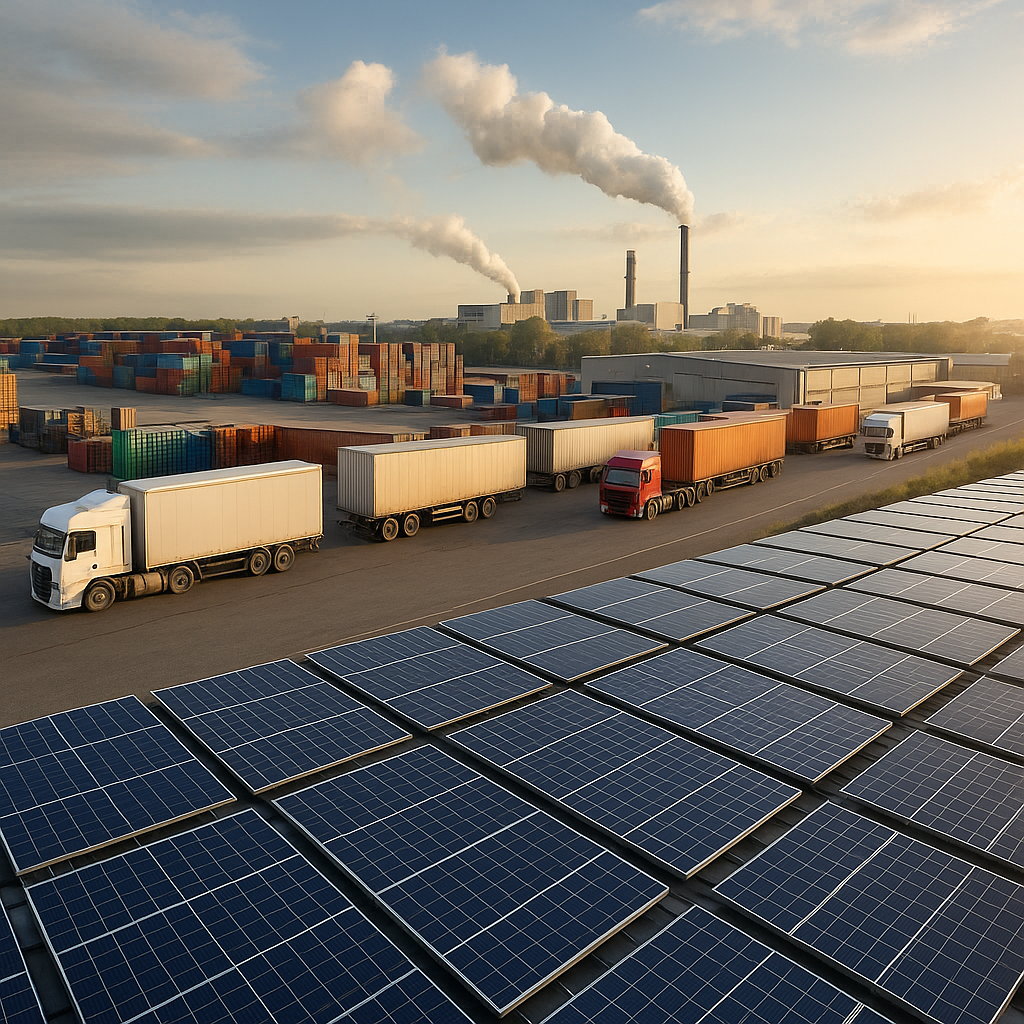AI cuts supply chain emissions by over 1,000 tons annually
AI is not merely a computational tool but an organizational change agent. Its ability to gather and analyze real-time data fosters transparency across supply networks, facilitating more accountable decision-making. In port logistics, for instance, automated AI scheduling improved turnaround efficiency, while predictive analytics reduced idle energy consumption.

Artificial intelligence (AI) is rapidly emerging as the most effective weapon against supply chain carbon emissions, according to a new international study published in Sustainability.
Titled "AI-Driven Supply Chain Decarbonization: Strategies for Sustainable Carbon Reduction," the study provides evidence that AI-powered optimization systems can cut carbon dioxide (CO₂) emissions by up to 1,500 tons annually, while improving fuel efficiency and profitability across industrial sectors.
AI as the engine of carbon reduction
The authors analyze the role of AI as a technological and systemic enabler for transforming conventional supply chains into low-carbon ecosystems. Using comparative case studies from Tunisia's agri-food, textile, and port logistics industries, the research demonstrates that AI-driven systems can significantly reduce emissions through smarter planning, predictive analytics, and digital integration.
Rather than focusing on carbon capture or offsetting, the study centers on emission avoidance, achieved by optimizing logistics, minimizing waste, and improving energy efficiency. In practice, the implementation of AI algorithms such as Vehicle Routing Problem (VRP) solvers, Convolutional Neural Networks (CNNs), and predictive maintenance models resulted in fuel savings of 12–15% and substantial CO₂ reductions.
The most striking outcomes came from hybrid AI systems that blend short-term operational decision-making with long-term strategic forecasting. For example, digital twin models deployed at the Port of Rades enabled real-time optimization of container movement, resulting in 670–1000 tons of CO₂ avoided per year. Similarly, AI-based route optimization in agri-food logistics produced annual savings of 10.8 tons of CO₂ per company, highlighting the scalability of the approach across diverse sectors.
In addition to environmental benefits, the study underscores tangible economic returns. In one case, a VRP optimization system with a setup cost of 152,500 Tunisian dinars yielded annual savings of up to 91,500 dinars, achieving full investment recovery in just two years. The findings suggest that decarbonization and profitability need not be mutually exclusive but can progress together through intelligent technology integration.
The practical blueprint for AI-driven sustainability
To move from theory to real-world implementation, the authors introduce a phased decarbonization roadmap running through 2030. The framework begins with localized pilots that integrate machine learning into logistics and production chains and expands toward system-level applications using digital twins, reinforcement learning, and autonomous optimization systems.
In this roadmap, hybrid AI solutions play a pivotal role in bridging the operational-strategic gap. Operational models, such as CNNs for defect detection and machine learning-based predictive maintenance, focus on day-to-day efficiency. Strategic models, like ARIMA, SARIMA, and LSTM, enhance forecasting accuracy and long-term planning. The combination of both levels enables firms to align short-term emission control with broader sustainability goals.
The researchers note that these applications directly support global climate governance frameworks including the Paris Agreement, the EU Green Deal, and the United Nations Sustainable Development Goals (SDGs). In particular, AI systems strengthen compliance with decarbonization mandates by providing measurable, verifiable data on emission reductions and energy use.
AI is not merely a computational tool but an organizational change agent. Its ability to gather and analyze real-time data fosters transparency across supply networks, facilitating more accountable decision-making. In port logistics, for instance, automated AI scheduling improved turnaround efficiency, while predictive analytics reduced idle energy consumption.
The authors also state that the transition to AI-supported sustainability requires policy alignment and digital infrastructure investment. Governments and industries must collaborate to ensure that data interoperability, cloud security, and workforce training evolve in parallel with technology deployment. The researchers propose that national decarbonization plans incorporate AI readiness assessments to identify regulatory and infrastructural gaps that could hinder large-scale adoption.
Challenges and the road ahead
While the study highlights AI's potential, it also identifies several obstacles to widespread implementation. Key among them is data quality, especially in rural and underdeveloped areas where connectivity remains inconsistent. The researchers found that poor data accuracy reduced AI model performance by 5–10%, limiting the precision of forecasts and route optimization.
Another major challenge is computational cost. Training and maintaining AI systems demand substantial energy and processing power, which can offset environmental gains if not managed carefully. This issue is particularly acute in small and medium enterprises (SMEs) that lack the financial or technical capacity to sustain continuous model operation.
Organizational resistance also emerged as a recurring theme. Many firms remain hesitant to adopt AI due to uncertainty about its return on investment and its compatibility with existing workflows. The study suggests that cross-sectoral partnerships, between universities, logistics providers, and technology firms, could mitigate these barriers by sharing expertise and infrastructure.
To overcome these challenges, the researchers propose the creation of open-access decarbonization datasets to enhance algorithm training and validation. They also recommend the integration of renewable energy-powered data centers to reduce the carbon footprint of AI computation itself. In their view, ethical AI practices and sustainability-by-design principles must underpin every stage of the technological lifecycle, from data collection to model deployment.
- FIRST PUBLISHED IN:
- Devdiscourse









